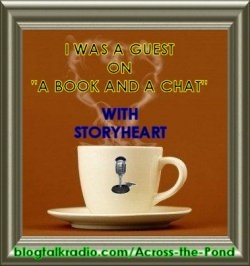As we’re now a week into National Novel Writing Month, with over 120,000 members scribbling and typing away this year (join us, resistance is futile!– www.nanowrimo.org), an article on writing seems appropriate.
Authors are often asked how they create their characters. The answer varies from author to author, from book to book, and from character to character. Sometimes, characters just walk onstage, so to speak, fully formed, absolutely sure of who they are, and behave exactly as they please, regardless of the author’s intentions. Diana Gabaldon, author of the Outlander series, says this is how Claire Beachamp Randall came to her. She simply walked into a shack full of Scottish Jacobites and announced herself in very un-18th Century language. It is how my characters Shawn and Niall came to me. They simply are who they are, they’ve never been anything else, and I couldn’t make them be if I tried. Interestingly, this even goes for looks. I have had the experience twice now, of meeting someone who is the spitting image of the character I’ve been writing. Not that I had an exact face in mind. But somehow, sometimes, as an author, you see someone, and you just know: that’s him!
Some characters walk onstage but are a little less clear. This is how Angus, in The Minstrel Boy (Book 2 of The Blue Bells Trilogy) appeared. He walked up to Amy and gave her coffee. He has caused me no end of trouble by doing this, possibly altering the entire ending of the series from what I planned. And yet, he is rather reserved, and I’d spent quite a bit of time with him when one day he announced that he plays bagpipes. Now, why didn’t he tell me that before?
Many characters are drawn from real life, modified from combinations of people we know, or saw in passing at the store, or spent a few days getting to know on a job somewhere. I recently read a quote in Voyager, by Diana Gabaldon, to the effect of writers being cannibals: we take various parts of people we know, mix them together, and let them simmer. Very true. Ironically, the quote was spoken by one of her characters.
Then there are the characters that take actual work. You need a villain. Your main character needs a daughter. Your protagonist needs a boss. And you need to create them. There are many sites out there with ‘character interviews’ and ‘character dossiers’ of various lengths. One site I really like is www.storyright.com but there are plenty of them. These interviews cover all aspects of a character– what does he look like? Short, tall, heavy, thin, hair color and length, facial hair, neat, messy, what does he wear? What is his personality like? Outgoing, talkative, reserved, opinionated, slow to form an opinion, expressive, stoic, funny, serious? What kind of family did he come from? What is his education? When you’ve created the answers to enough of these questions, you begin to get a feel for who these people are.
You’ll know you’ve done the job well when your characters start to act for themselves and ignore the outline you’ve spent months working out to perfection. This is a good thing, really! It means they’ve become real people, to you and to your readers.
Share![]() Tweet This Post
Tweet This Post
Tags: Claire Beauchamp, creating characters, Diana Gabaldon, nanowrimo, National Novel Writing Month, Outlander, Writing


